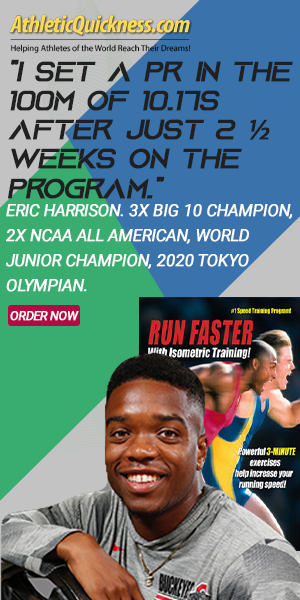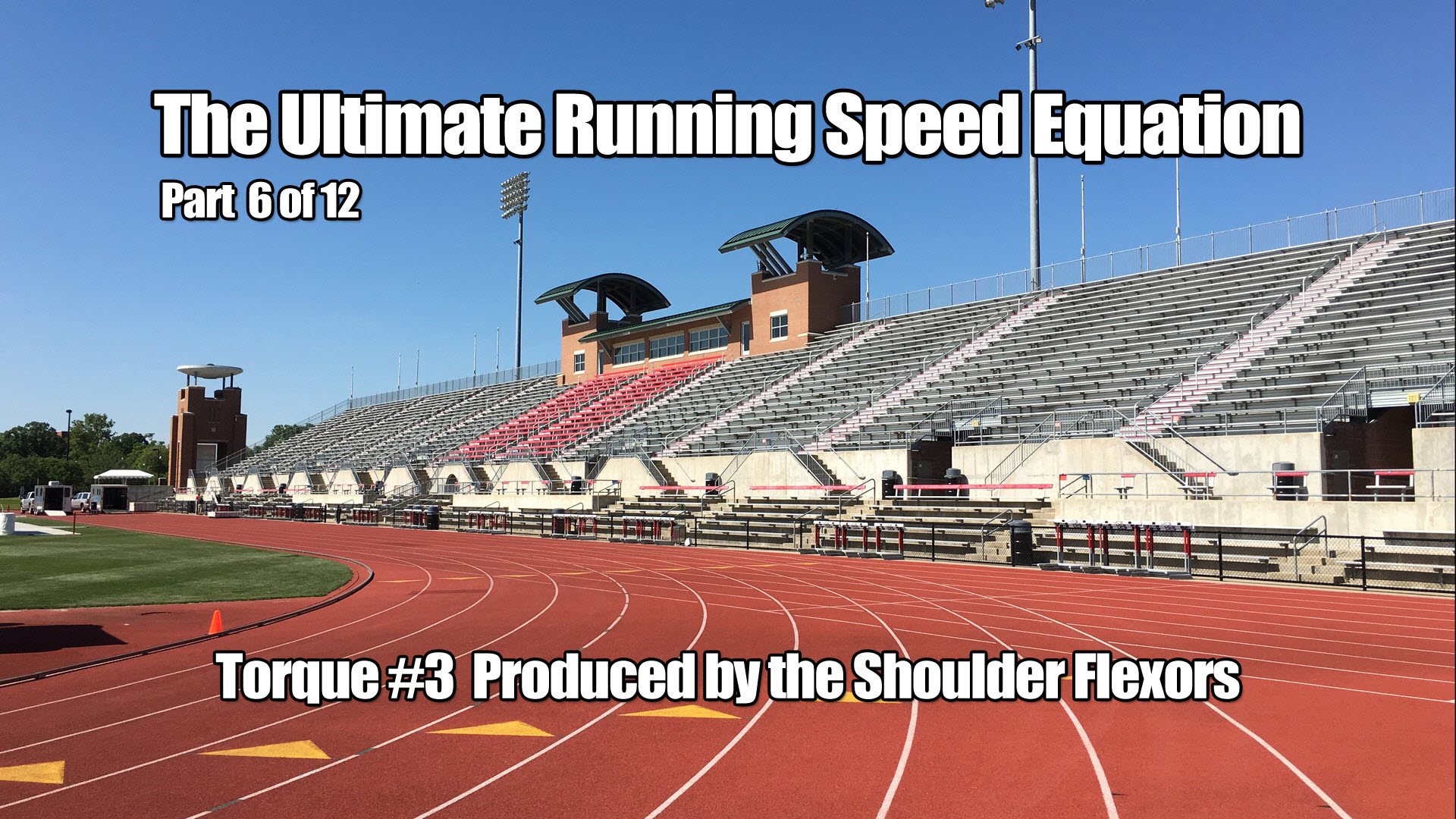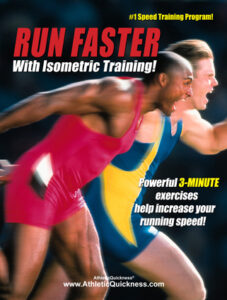Part 6 of 12 – Arms Produce Torque in the Transverse, 3D, Plane
In this part, I am going to explain to you how the arms are used in running. And, to help you appreciate their role, I am going to continue showing you the human body in 3D (dimensions), not 2D, because, well, we live in a three dimensional world and not two, so, why limit ourselves, right?
Misconceptions Abound About The Use of The Arms in Running
Before I do, however, I want to bring up some of the numerous misunderstandings people sometimes have about the role of the arms and where they may come them.
I believe they come from an evaluation of the arms at ground level, only. The problem with this is that looking at a runner from the side, or, from the ground level, will only enable us to analyze them in two dimensions, those being the 1) horizontal plane and 2) vertical plane.
Limiting our study of the arms to just two dimensions will not give us enough information to work with and as a result, it will lead to erroneous conclusions about how they are used in running, and for that matter, jogging and walking, as well.
One of the more common misconceptions that have came about from a 2D analysis are that the arms are used to counterbalance the twisting of the hips when we run. What makes this statement false, as you will see, is that the arms always work together when viewed in the 3D plane.
However, even though they work together amongst themselves, they only work with one hip, or, leg at a time, never both, as this theory suggests. But, do you know which one?
The Arms DO NOT Stabilize the Legs
Another misguided view stemming from a 2D analysis is that the arms are merely there to stabilize the body while running as well as to provide a dampening mechanism for the legs. These, again, are erroneous assumptions because they suggest the arms play a secondary, reactionary role if you will. However, as you’ll soon see, the arms are major force contributors to the whole running cycle.
Furthermore, the arms have nothing to do with stabilizing the legs. Remember, I just said they work with one of the hips/legs at a time, not both. So, as we get further, you’ll learn that the job of stabilizing the body while running, walking and jogging comes from the (one) hip/leg that is off the ground and not the arms. Again, more on this later.
Lastly, and my personal favorite, is that arms are there to provide horizontal force down the track. This actually came from a very well-respected author who has been quoted about this on many occasions. However, even in his book he admitted he wasn’t quite sure of their role.
Now, even a layperson can understand that when looking at a runner in the horizontal plane, from the side, that the arms are going in opposition directions. In other words, one arm is thrusting forward, down towards the finish line while the other is thrusting backward, toward the starting blocks.
This means their horizontal forces will cancel each other out. So, to state they are providing horizontal force when in fact it is canceled out is simply false, yet again. This is why we need to look at a runner in 3D to see how the arms are used in running so we don’t end up with any more misconceptions about them.
3D FOR ME
Hopefully, now, you can begin to appreciate why, in my study, I include an overhead view of the human form so that the third plane of motion, 3) the transverse plane, can be studied along with the other two, those being the 1) horizontal and 2) vertical planes. Because, the ability to observe an athlete in all three dimensions is where the magic of how the arms are used in running, is revealed.
I NEED MORE TORQUE, PLEASE
If you have been following along so far, you’ll know we are talking about torque, or, rotation in the transverse plane and are up to Torque #3, now. This third torque your body must produce in order for you to run your best will come from the right arm. So, looking at the right arm on our female track athlete in Figure 6-1 below, imagine it is the only force acting on the body. So, nothing else is going on.

Figure 6-1.
The other arm isn’t involved and neither are the legs. We see, then, that because it has been thrust out in front of her, which is a function of the arm, or, shoulder flexor muscles, it will exert a pulling force on the right shoulder joint, forward, in this direction as depicted by the white horizontal arrow in Figure 6-2, below.

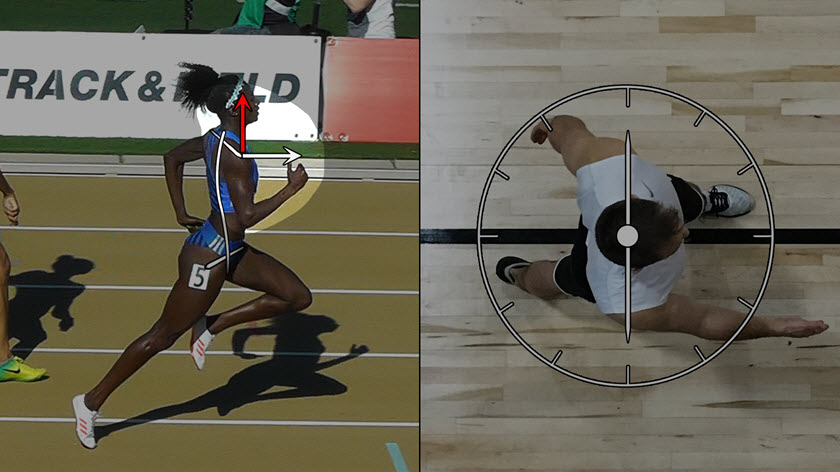
Figure 6-3.
But as before, I am going to illustrate the net result of these two components with just one simple horizontal white arrow, going forward. Now, again, if this was the only force acting on the body, do you think the effect of it would be to just pull her straight forward, or, do you think there might also be some additional reaction?
Well, once more, the only way this force causes her to move straight ahead would be if it were acting along her midline, as seen in Figure 6-4, but that’s not the case.
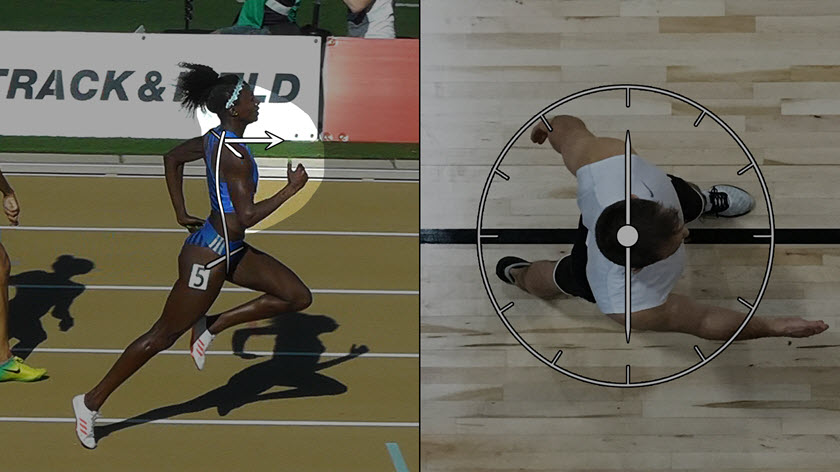
So, since it’s displaced away from the midline, It would not only pull her forward, but would also cause her upper body to twist, or, rotate. See Figure 6-5.
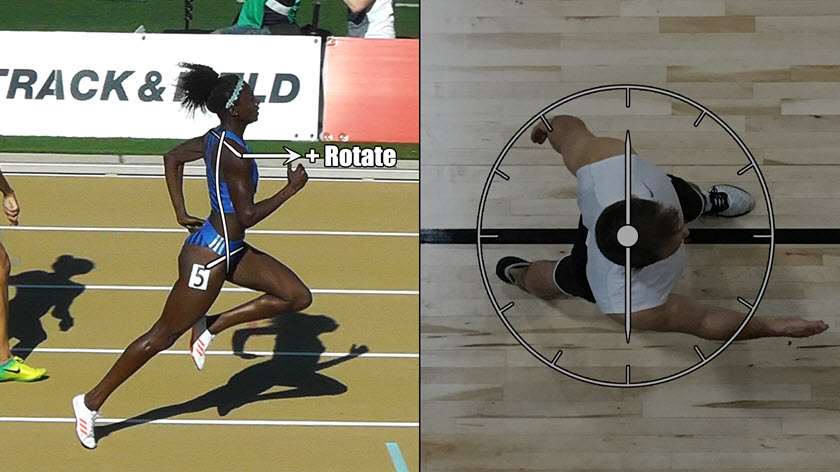
Again, It would have to, because it does not fall along her midline where her center of gravity lies and perhaps you starting to see a pattern with this. So, if she does rotate, the question then, is, which direction would it be? Clockwise, or, counterclockwise? To help you see this better, let’s look at this from above on our male athlete.
The same force on our female athlete pulling forward on her right shoulder joint can also be shown here on our male athlete in Figure 6-5 below.

So, as the force pulls forward on this vertical line that now represents the level of his shoulders, we can see where it will try and rotate it in the… what direction? Care to take a guess? If you said the counterclockwise direction, then good job, once more as you are correct and let’s show it by the direction of this red arrow in Figure 6-6 below.

And let’s also go ahead and place the corresponding counterclockwise arrow showing this rotational force, or, torque on our female track athlete and perhaps now you can envision this one taking place better, too. See Figure 6-7 below:
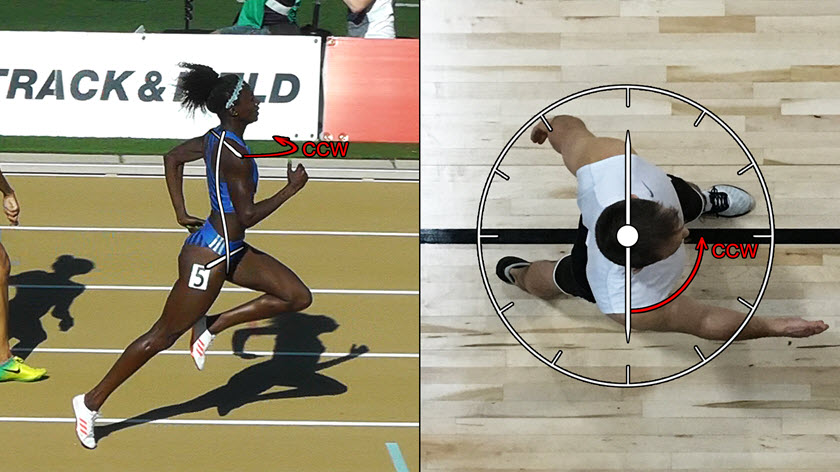
Now, Are You Starting to See How the Arms Are Used In Running?
So, this is the third torque your body must produce and it comes from action of the shoulder flexor muscles. By now, it should me a little more clear now how the arms are used in running and why it’s important to have strong muscles in them.
But, we are not done with the arms just yet. Remember, we have to account for the arm going backward, towards the starting blocks and that is what we are going to do in the next section. To find out more let’s move on to Torque #4 for the shoulder extensor muscles.

